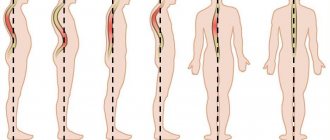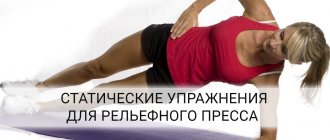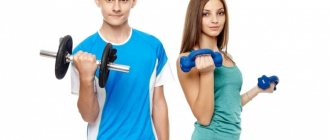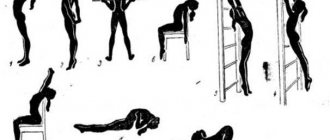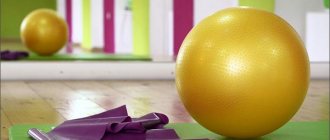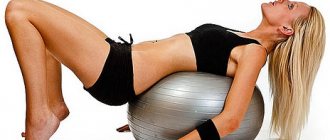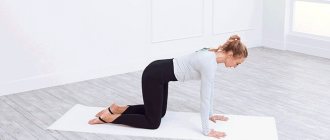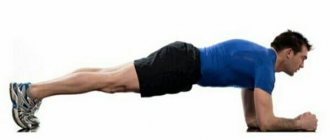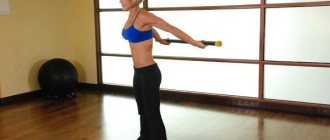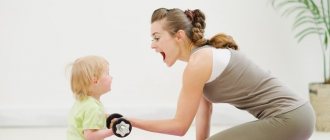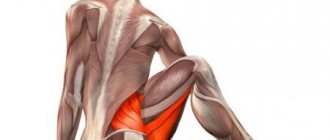Medicine ball functionality
A medicine ball is a simple and at the same time unique sports device. It is made of durable material, does not bounce off the surface, and is compact. There are medicine balls of different weights and designs on sale - both for beginners and amateurs, as well as for professional athletes. The round shape of the projectile and its weight allow you to work out and strengthen all muscle groups, ensure full functioning of the joints and have a gentle effect on the ligamentous apparatus. Medical medicine ball is suitable for young, adults, old people. The functionality of a medicine ball makes it possible to realize a variety of purposes. Medicine balls are widely used in physical therapy, rehabilitation, and, of course, strength training.
How to choose a fitball
Only a correctly selected ball cannot cause harm and will help you achieve a positive result in a short time.
When purchasing, the first thing you should pay attention to is the material from which it is made. The ball must be homogeneous, dense, withstand a weight of more than 150 kg, and not have a distinct specific odor. It is better to choose the size of the projectile in the store by sitting on it. In this position, there should be a right angle between the shin and thigh, otherwise exercises with a fitness ball will put more stress on the joints. If it is not possible to “try it on,” then the choice is made according to the person’s height. The picture above shows at what height and what diameter you need to take the ball.
Medicine ball training
This set of exercises with a medicine ball is equally functional in the fitness center and at home. A medicine ball routine should always begin with a warm-up to prepare the muscles and ligaments for the training process. Each exercise is designed for 10-20 repetitions. To improve your mood and emotional tone, you can turn on your favorite music. So, let's get started with the exercises:
- Bend your legs under you and sit on your heels. Hold the medicine ball behind your back with both hands. Squeeze your shoulder blades together at a smooth pace, raising your arms high. Keep your back straight, do not lean forward.
- Same starting position. Stretch your arms forward with the medicine ball and bend your elbows. Place your hands behind your head and try to touch your back with springy movements. If the execution is correct, tension in the triceps is felt.
- In the same position, take the medicine ball in one hand and extend it forward, while the other hand is pulled back and parallel to the floor. Bring your hands together and pass the ball.
- Place one leg on your knee and move the other out to the side as far as possible. Hold the medicine ball overhead with your arms straight. Next, bend your body in the following sequence: to the leg laid to the side, and then to the other.
- Use a medicine ball as a support for push-ups by bending your elbows at a 45-degree angle and pulling your stomach in.
- Twisting the body with the ball. To perform this exercise, sit on the floor, hold a ball in front of your chest, lean your body back until you feel your abs tighten, and keep your feet together and slightly elevated. Alternate body turns to the right and left.
- Lie on your back with the ball between your ankles. Now lift your legs slightly off the floor and hold for a few seconds.
- Squats with a medicine ball. In a standing position, hold the ball above your head, in a squat - with your arms extended in front of you.
- Perform medicine ball jumps from a squat position. In the initial position the ball should be near the body, during the jump - above the head.
As you can see, the medicine ball complex is quite simple, but the benefits and effectiveness are high. By performing these exercises 2-3 times a week, you will pump up the muscles of your body and get rid of excess weight. Experience the full potential of a simple and affordable exercise machine - a medicine ball.
You can buy a medicine ball in Moscow in our online store Tanita-shop.
What is fitball
Fitball is a universal purchase that will help you lose extra pounds, achieve flexibility and a flat stomach.
Exercises with a gymnastic ball involve several muscle groups at the same time, which is difficult to achieve with regular training. It is necessary to constantly maintain balance, which leads to rapid burning of calories. This simulator was created in Switzerland by doctor Susan Kleinvogelbach for the rehabilitation of people with spinal injuries. But doctors began to notice that the ball is able to develop coordination of movements, improve blood circulation and metabolism, speed up the regeneration process and tone the human vestibular apparatus. Thanks to such research, ball exercises now occupy a leading position in the world of fitness; they improve the figure and shape posture.
A set of exercises with a skipping rope
Sports activities with a skipping rope improve body coordination, improve dexterity and speed of movements, and train the muscles of the legs and arms. At the beginning of the lesson, the jump rope is folded in four and walking is performed with it to warm up the muscles.
Walking gradually becomes more difficult:
- regular;
- on heels and toes with a jump rope pulled over the shoulders;
- with lunges forward (jump rope at the top);
- squat with the rope in front.
Subsequently, walking is replaced by running, in which the arms occupy different positions:
- front;
- behind;
- above the head;
- behind the back of the head.
After breathing has been restored, you should move on to general strengthening exercises:
- Initially, you should take a standing position, your heels are together, your toes are apart, the rope is folded in four and held with your hands below. Inhaling, the practitioner stretches the apparatus, raises his straightened arms with the rope upward, stretches the muscles, looking up; exhaling, returns the hands with the projectile to their original position. Actions are performed smoothly and are performed 6 to 8 times.
- Initially, you should stand straight, fold the rope in half, hang it around your neck, holding on to its ends. The exercise consists of alternating springy bends of the body in one direction and the other. At the same time, the arm towards which the tilt is made is extended, and the other is bent behind the back of the head. You need to repeat the exercise 4-5 times, maintaining an average speed.
- The student performs squats, each time stretching his arms forward with the rope stretched. After each squat, you should take the starting position with your arms down. The optimal number of repetitions for this exercise is 7-8 times.
The training must necessarily include jumping rope in various modifications:
- with rotating the rope back and forth;
- on two legs and on one;
- moving forward by jumping and running.
Exercises for different muscle groups
The first gymnastic ball appeared back in the 50s of the last century in Switzerland for the purpose of rehabilitating patients with cerebral palsy. In the 80s, the ball was used mainly to treat patients with problems with the musculoskeletal system, so first we will get acquainted with some exercises that have a beneficial effect on various muscle groups.
Pectoral muscles
Focus on straight arms, and place the gymnastic ball under your shins. The back should be straight and in one straight line with the legs. Place your palms slightly wider than your shoulders. Bend your elbows and lower yourself as low as possible, then return to the starting position. If you find it difficult to balance on the ball, lean on it not with your shins, but with your hips. Over time, move the ball closer to your ankles. You should not bend at the lower back.
Stand with your back to the ball. Stretch your arms forward. Raise the foot of your right leg and keep it at a height of 20-30 cm above the floor. Then slowly bend the knee of your left leg and squat until your buttocks lightly touch the surface of the ball. Secure the ball so that it does not jump out from under the body. You must keep your head straight. The exercise is repeated 10-15 times with alternate use of both legs.
Back muscles
Lie on your stomach on an exercise ball with your palms on the floor shoulder-width apart. Using your hands, move your body slightly forward, with the ball under your knees and your body forming a straight line. Legs should remain straight. The feet should be kept together and the hands should be under the shoulder joints. To maintain balance, try to tense your core muscles, but keep your neck and head relaxed. While in this position, tense your abs and lift your hips up (while your legs should not be bent) so that your feet rest against the ball. Very slowly return to the starting pose. Repeat the exercise 8 – 10 times.
Abdominal muscles
Sit on an exercise ball. Place your feet flat on the floor, crossing your arms over your chest. Stepping your feet, carefully lower yourself forward so that your back is on the ball and your knees are under your ankles. You should keep your head suspended and not tilt it back. Then begin to gradually “twist”: first tuck your head, then your shoulders and finally the middle of your back - until you feel a complete contraction of the abdominal muscles. Slowly return to the starting pose. The exercise is repeated 8 – 10 times.
Arm muscles
Lean on the ball with your arms straight. Hands should be shoulder-width apart. After this, step back and spread your legs wide. Tighten your abs and lower yourself down, bending your arms. At the same time, try to keep your elbows as close to your body as possible. Return to the starting pose. The exercise is repeated 10 times. It is necessary to keep your back straight.
Rules for completing training
General strengthening workouts must have a final part lasting 3-5 minutes. It provides a smooth transition from a tense and excited state to relative calm. At the end of the lesson, the leader conducts a formation, and the children do calm walking and breathing exercises.
This helps normalize heart rate and breathing.
At the end of the physical education lesson, students clean up the sports equipment that was used to perform general developmental exercises, change clothes and wash their hands.
Article design: E. Chaikina
Technological map of the lesson “Medicine ball throws (testing)”
Practice the skill of throwing a medicine ball in different ways; develop dexterity and coordination of movements
Technological map of lesson No. 60
Item:
Physical Culture
Class:
2
Author of UMK:
"Physical Culture. Grades 1-4,” ed. V.I. Lyakh - M. “Enlightenment”, 2014.
Lesson topic:
Medicine ball throws (testing).
Teacher's goals
Practice the skill of throwing a medicine ball in different ways; develop dexterity and coordination of movements
Lesson type
Control and correction of knowledge
Planned educational results
Subject
(scope of mastery and level of competence):
will learn to:
explain in an accessible form the technique of throwing and catching a medicine ball;
analyze and find errors; find distinctive features in the performance of throws by different students; will have the opportunity to learn:
to provide all possible assistance and moral support to peers when completing educational tasks;
kindly explain errors and how to eliminate them. Meta-subject
(components of cultural competence experience/acquired competence):
cognitive –
evaluate their achievements, answer questions, relate studied concepts with examples;
communicative -
master the dialogical form of speech, the ability to engage in verbal communication;
Regulatory -
master the ability to understand the educational task of the lesson and strive to fulfill it.
Personal:
acceptance and mastery of the student’s social role; development of motives for educational activities and the formation of personal meaning of learning; development of cooperation skills with adults and peers in different social situations
Methods and forms of training
Partially search; individual, frontal
Educational resources
Medicine balls
Organizational structure of the lesson
Lesson stages Educational and developmental components, tasks and exercises Teacher activities Student activities Forms of interaction Universal educational activities Types of control
1 2 3 4 5 6 7
I. Organizational moment
Emotional, psychological and motivational preparation of students for mastering the material being studied Conducts formation in one line.
Checks students' readiness for the lesson, voices the topic and purpose of the lesson; creates an emotional mood for learning a new subject. Perform formations on the sports ground. Listen and discuss the topic of the lesson, answer questions Frontal Personal:
understand the meaning of knowledge for a person and accept it; have a desire to learn; speak positively about the school; correctly identify themselves with the position of the student Oral survey
II. Updating knowledge
Execute drill commands. Perform walking while reproducing the task. Running in a column in a circle. Breathing exercises Gives the commands: “Align!”, “Attention!”, “Pay off in order!”, “Right!”, “March to the left in a detour!” .Explains the task: 1) on your toes, arms up (half a circle);
2) on your heels, hands behind your back (half a circle); 3) roll from heel to toe (a whole circle). Gives the command: “Run, march!”; at the end of the run: “Step march!” Conducts exercises to restore breathing Perform commands. Perform exercises. Perform running (2 min 30 s). Perform exercises Frontal. Individual, frontal. frontal Personal:
actively involved in communication and interaction with peers ;
demonstrate discipline, hard work, and perseverance in achieving their goals. Regulatory:
act taking into account the guidelines identified by the teacher; adequately perceive the teacher's assessment Carrying out actions according to instructions
If you liked the methodological development, the best way to say thank you is to share the link with your friends on social networks
